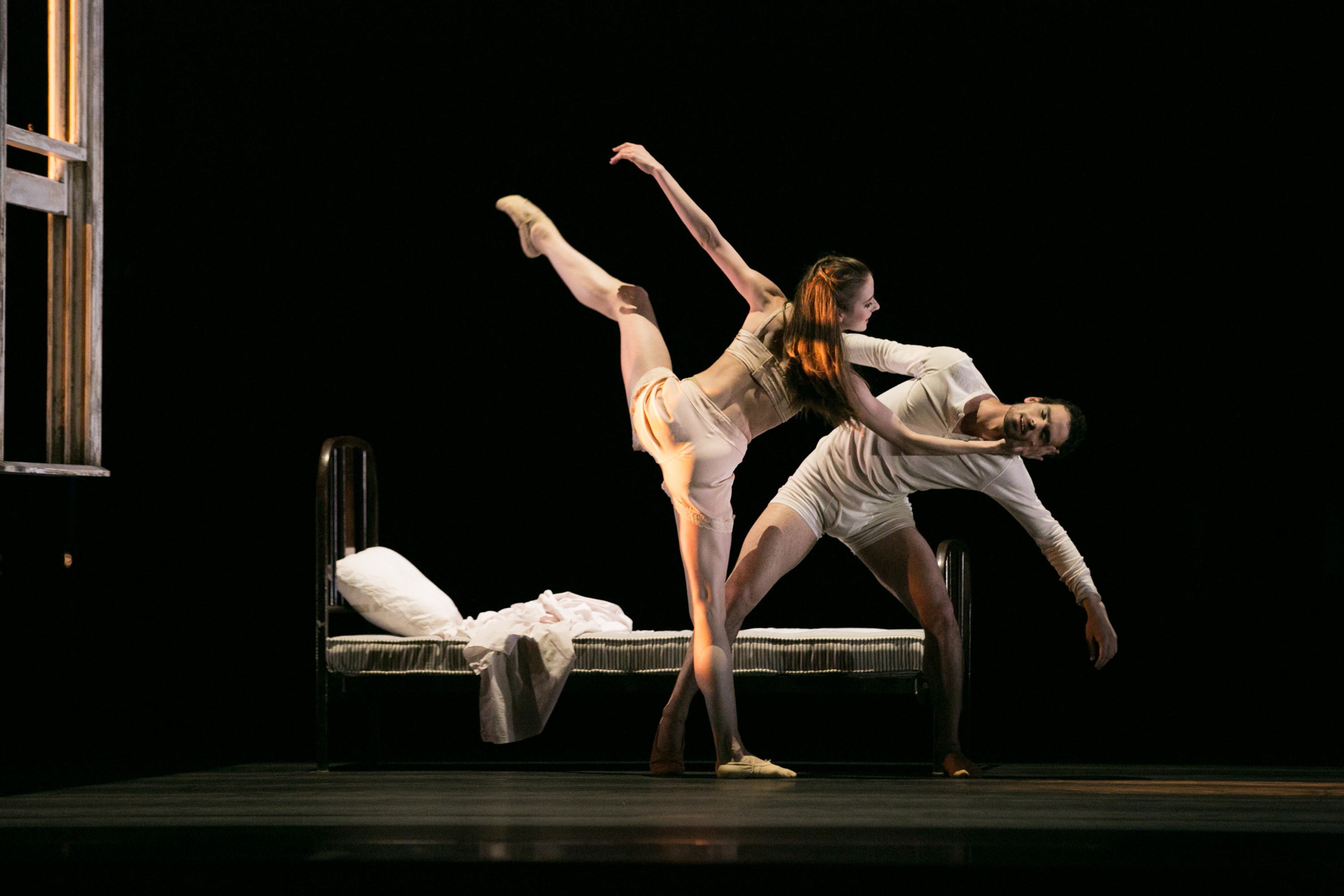
When I entered Toronto’s Four Seasons Theatre the cold was climbing, and when I left, the streets were coated with a fresh dusting of powder. But for the time that I was watching this ballet, I was wrapped in a cocoon of warmth, lulled slowly into a dreamlike universe where first there was deep contemplation about what it means to be human, and then a sensual and whimsical spell in a magical forest. We look to dance for beauty. For expressing emotions that aren’t adequately expressed by words. For creating a sanctuary from the elements, hard stresses of life, and our monkey brains, in general. The National Ballet of Canada’s second fall show gives us a chance to do all these through two emotive pieces. The first takes French philosopher Jean Paul Sartre’s exploration of existentialism, “Being and Nothingness” and translates it into saturated human emotions and grand sweeping movements. The second is a traditional ballet interpretation of Shakespeare’s enchanted comedy of errors, “A Midsummer Night’s Dream”. The two together become almost a lullaby.
Choreographer Guillaume Côté has turned Sartre’s philosophical work into a living, breathing, heaving, and feeling thing. Côté is also a principal dancer at the company and has choreographed many pieces in his career. He brings out the vulnerabilities of his dancers in this piece and contemporises the traditional genre of ballet by infusing it with elements of what appear to be jazz, hip hop, contemporary and even tango influences. Côté’s choreography is new and fresh, but never submits to the awkwardness of experimentation. His movements strike the beats of the music to emphasize its drama at key points- during leaps and serial pirouettes. The dancers’ bodies create shapes unusual for ballet which really highlights the humanity of the dance. This is a grounded and earthy dance. It is emphatic and passionate. All the characters are searching for something – meaning, identity, direction, light – and their search makes them frustrated. Accompanying Côté is the lyrical simplicity of Philip Glass’ score on piano by the very punk rock looking Edward Connell.
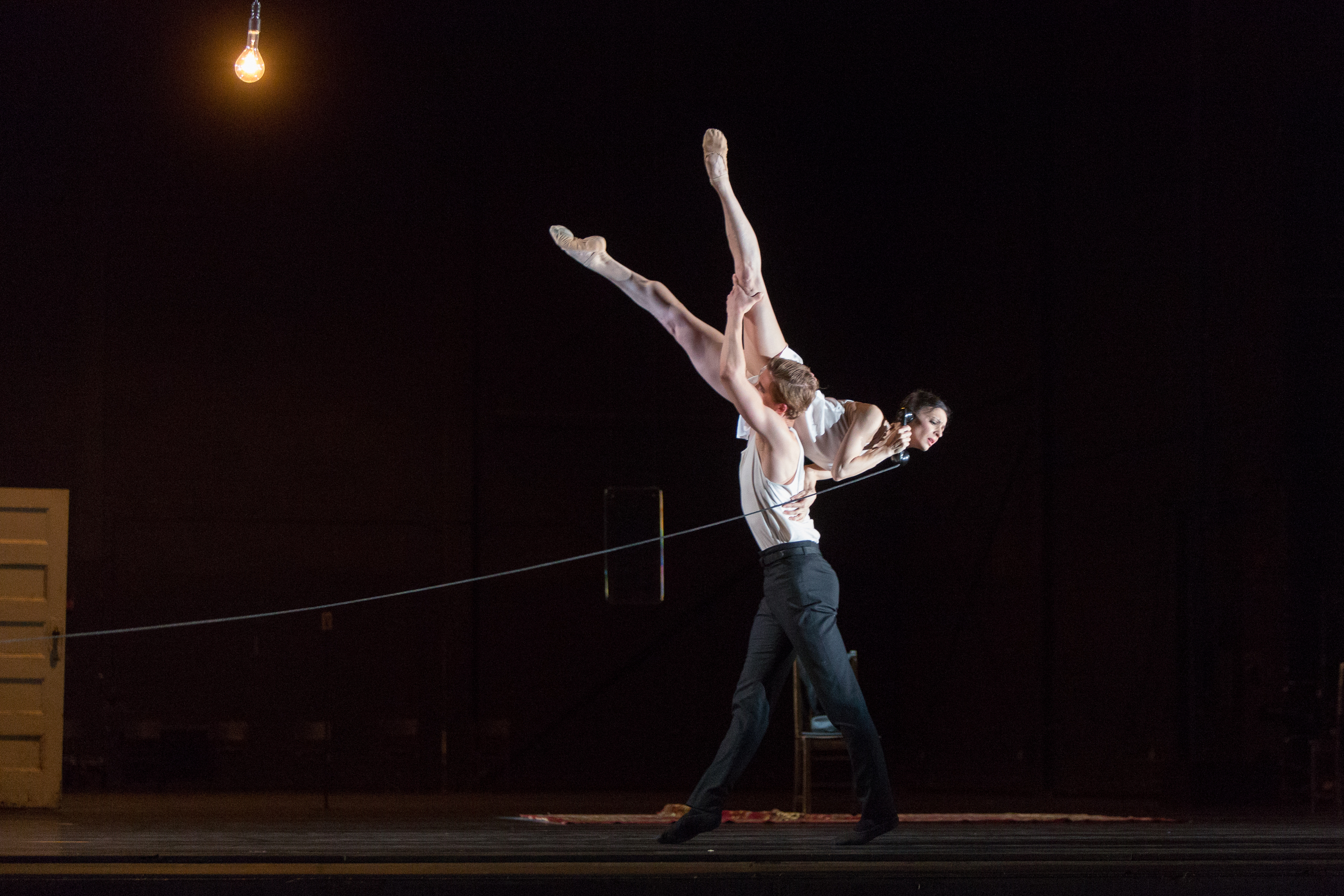
The set is opened up, stretching deep into the back, with a single light bulb hanging up front in the middle of the stage. There are a few doors and windows that section the stage into neighbouring apartments in a building. One room is furnished with the bed of young lovers lit by idyllic window. Another is a living room with a large rug and mirror. The third room is a sink in bathroom and the outside world is signified by a large white door. In each of these spaces live our characters, bound by the search for meaning, solutions and identity. By keeping the set this bare and the music limited to a piano, we are able to focus on the dancers’ movements that find themselves under a magnifying glass.
“Being and Nothingness” is divided into six parts by the six aforementioned rooms. A beautiful dancer in a silk negligee inhabits the main room with The Light. Her dance is earthy and her movements firm and strong. She examines her body and the movement it unleashes as if it were someone else’s. The light burns bright when she’s close to revelations. In The Bedroom we find young lovers waking up to morning light streaming in through their window. They are playful and the woman is intently flirtatious. This dance is light on the feet and joyful. The dancers convey the carefree energy of young love with all their hearts. This room is romantic, graceful, gentle, and ethereal. Watching the lovers in the background is a host of men in black suits and top hats who create geometric shapes and add dimension to the duet. The Door takes us on a journey through the relationship of a couple, start to finish. In their “outside clothes”, they meet and dance giddily to the promise of a new relationship. This piece is reminiscent of a Pina Bausch dance. It’s set in what seems like the 1950s with a very Pina-esque female dancer in a floral dress and low bun. The style is free form contemporary. There are anguished arguments at the end with limbs lashing. The dancing is powerful, grounded, heavy, a little whimsical and even joyous. With The Sink we have a strong solo that draws out more existential angst out of its young dancer. There is fierce contemplation as the dancer shaves at his bathroom sink and bonds with the couple in the neighbouring room through a shared window. The men in suits have their own dance with The Street as well.
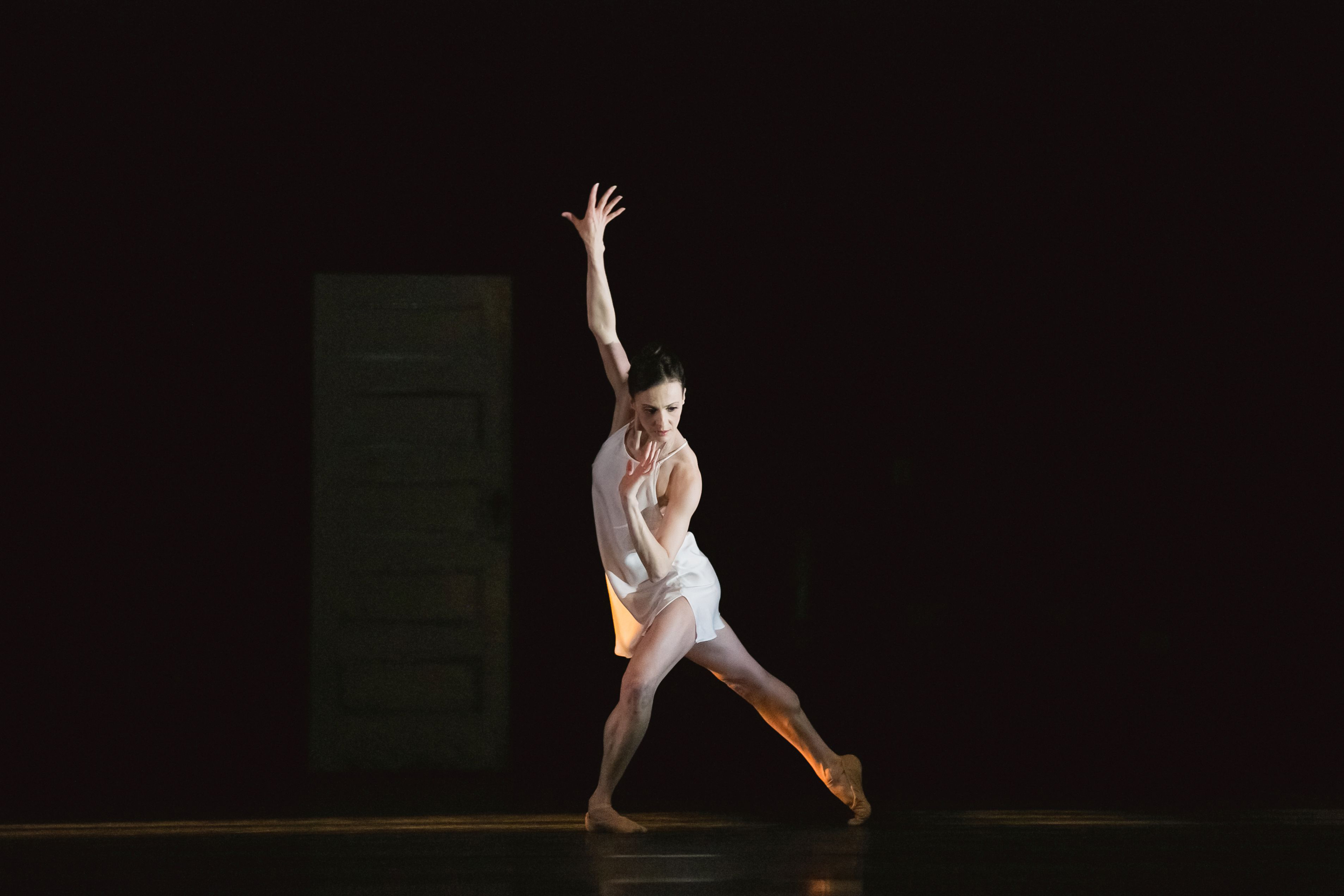
The Living Room and The Call are my favourites. They are drenched in drama and emotions drip off of their dancers in rivers as they are caught in a whirlwind of climactic energy. I think Svetlana Lunkina and Brendan Saye are spectacular in The Living Room. Svetlana sports another Pina Bausch look but a darker and enigmatic one. She consults her appearance multiple times in the mirror and frets and worries. Her partner, Saye, tries his best to pull her away from her superficial concerns but Lunkina continues to be consumed. Their relationship although tense, is filled with love and care- I loved how this was made apparent through Côté’s choreography. It was emotional and studded with pain and drama. There were a few times my heart skipped a beat- when Saye lifted up the carpet and sent a ripple through it to Lunkina who caught it in the chair that was sitting on and rose dramatically to her full height. At another point, Saye held on to Lunkina’s feet and swung her around in a helicopter-like motion with Lunkina slapping the floor every so often and creating momentum that ensured she hovered just so above the ground. My jaw all but dropped to the floor.
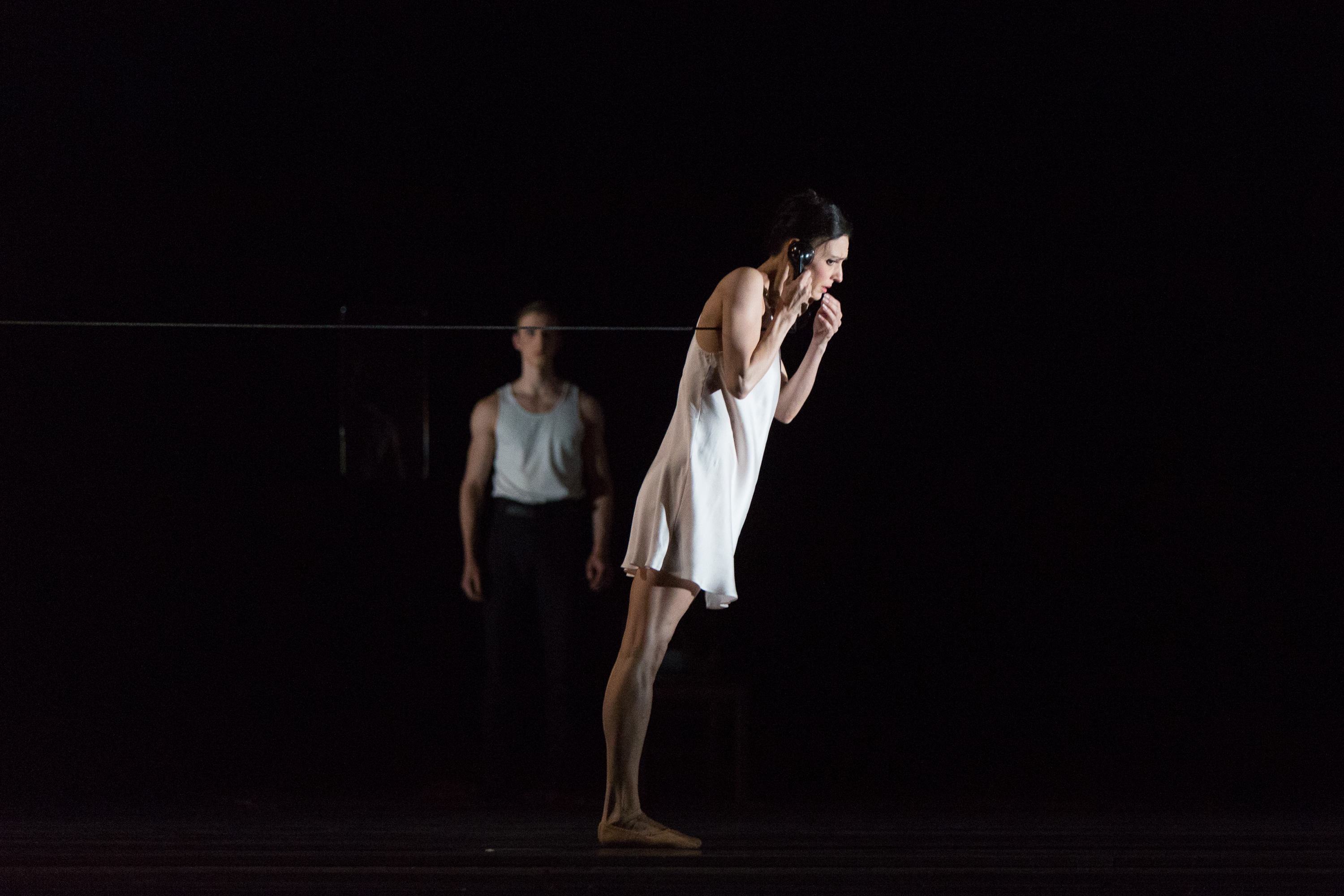
The Call is yet another genuine portrait of love. We see Greta Hodgkinson from The Light answering a telephone call that uncovers layers of grief. Hodgkinson is a beautiful dancer, her body is poetic, strong and firm yet elegant. Her and Ben Rudisin, slowly learn about the bad news filtering in over the phone. They register it and digest it bit by bit, move by move. As Hodgkinson gives in to the pain, Rudisin supports her with sure-footed and tender love. Their duet is extremely touching and romantic. This is a fitting end to an ambitious and thought-provoking piece.
I also particularly enjoyed Côté’s brand of masculinity that he enrobes his male dancers in. These men are strong but sensitive. They are not afraid of showing emotions and are solid partners. I loved seeing this detoxified and honest masculinity.
Sartre’s philosophy is deep and cerebral. I dare not tie these dances to his concepts in case I get the connections wrong, but Sartre touches on some very interesting topics like existence, non-existence, identity, tying our identity to our social situation, looking at oneself as an object, being for others and sexual desire. Côté has definitely sparked my interest in Sartre but whether I have it in me to delve deep and understand what Sartre truly means, I’m not too sure!
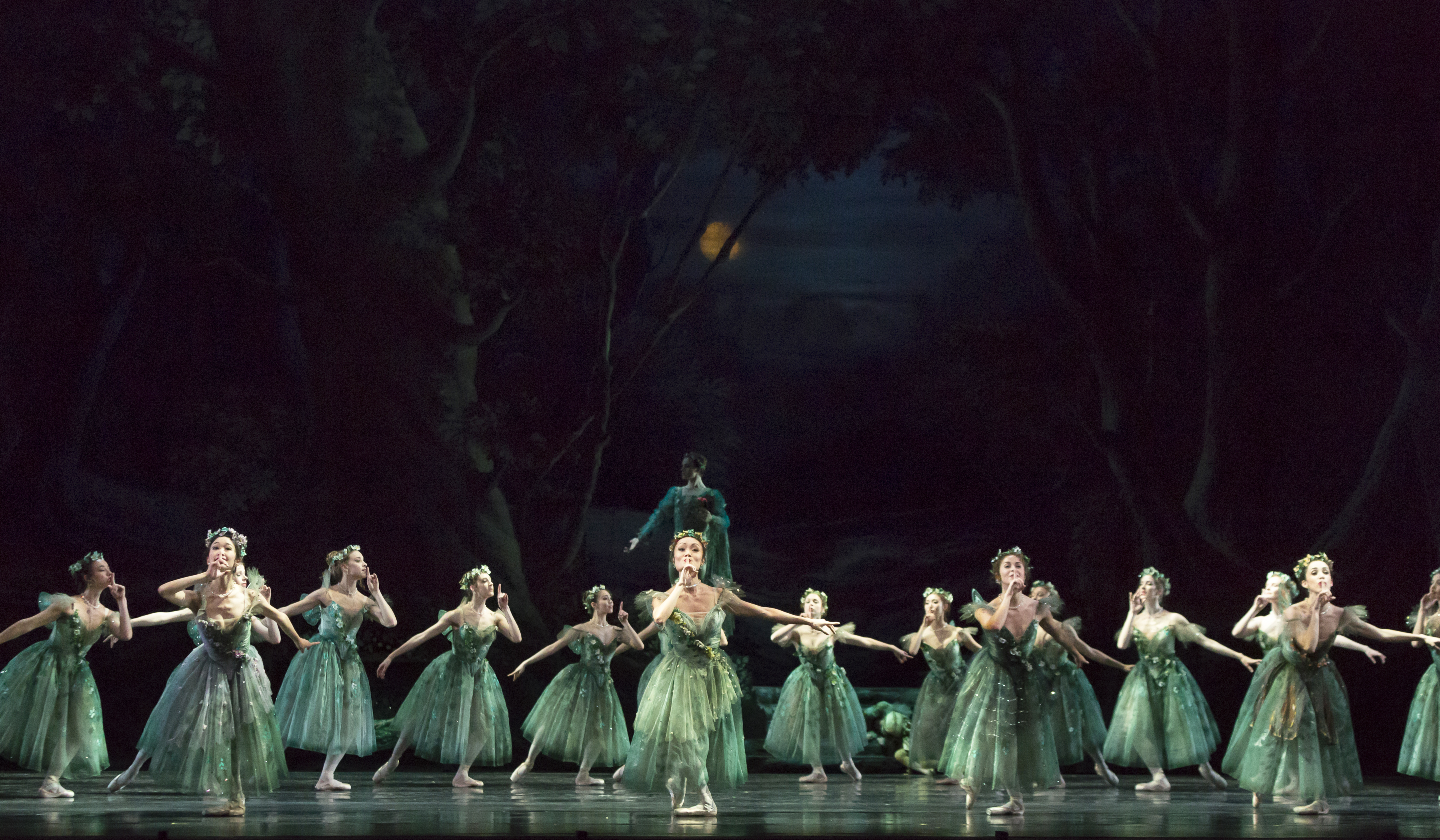
“The Dream” takes us away from Côté’s quest for meaning and into a psychedelic wonderland. The stage is transformed into the green womb of an ancient forest. Fairies in matching green gossamer dresses perform an introductory piece that is coordinated with every beat in the music. A yellow hazy moon quietly charts its way across the backdrop of a night sky. We are introduced to Oberon who falls in love with Titania and enlists the help of the mischievous Puck to trick Titania into falling in love with Oberon through a drugged rose. A rancorous mess ensues as two couples become embroiled in this scheme.
“The Dream” is delightful in how traditional it is. We literally have men in tights here! Sometimes you can feel the production parodying the traditional style of ballet. The comedy and slapstick, especially when it comes to the two confused couples, is brilliant, while Skylar Campbell, who plays the charming Puck, hands down steals the show. Bottom who is en pointe gets a lot of applause as well, as do the extended solo pieces that Oberon and Puck get to perform. I surprisingly found myself really buying into Titania’s and Bottom’s short lived romance as I couldn’t quite imagine why anyone would go for the quickly angered and petty Oberon who couldn’t take no for an answer. #MeToo anyone?! But Shakespeare being one to tie everything neatly at the end, makes sure all the couples find themselves symmetrically matched into a happily ever after.
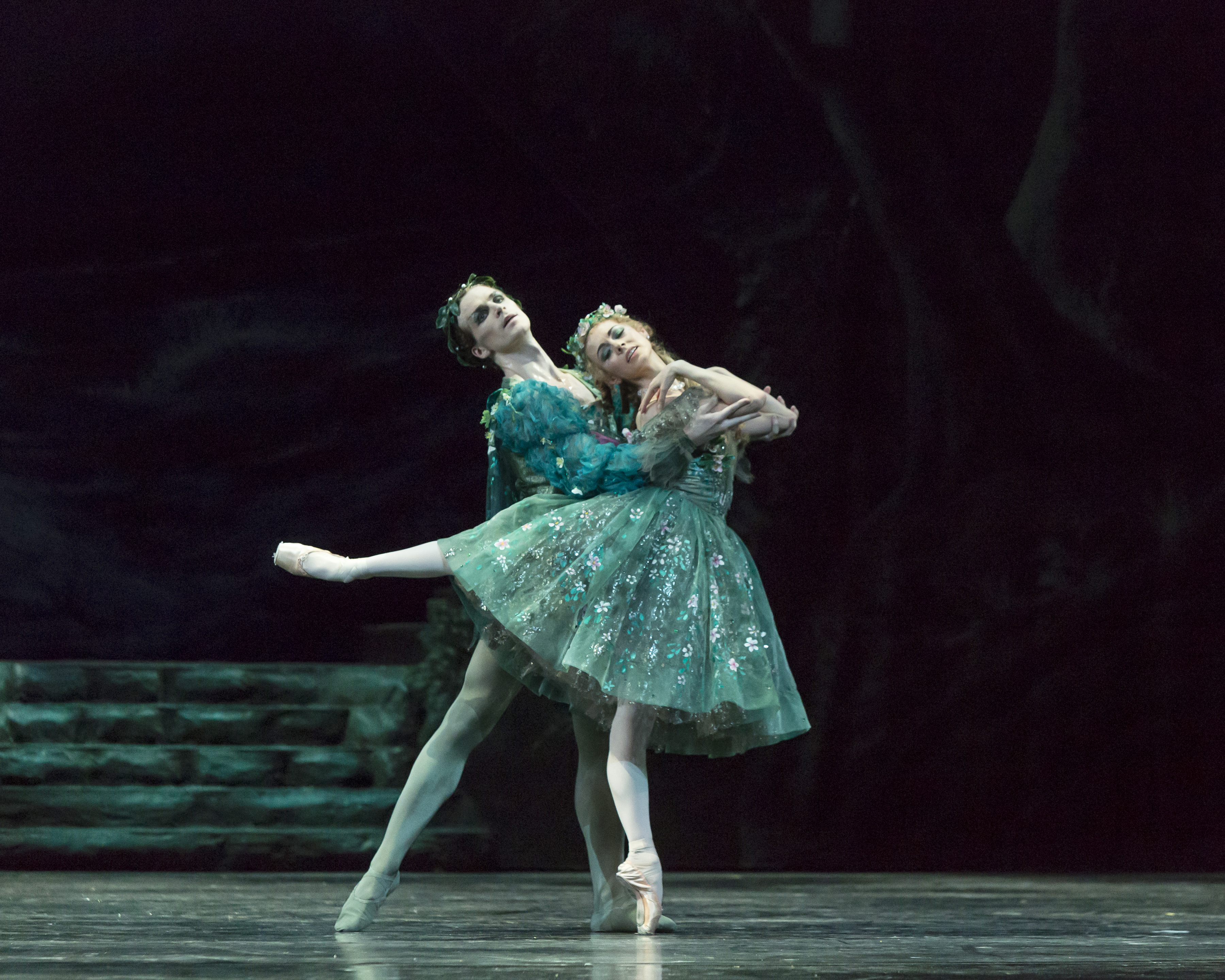
“The Dream” is the perfect complement to “Being and Nothingness” as it takes our imaginations for a wild spin after it is serenaded by some beautiful brainwork. We go from minimal to abundant, from stark to colourful, from realistic to absurd. This is the perfect pairing, down to the very details. Be prepared for an evening that rushes your senses with beauty, makes you think and lets you dream. It will get you through the Toronto winter and so you have to go!
Get tickets here!
– Prachi Kamble
